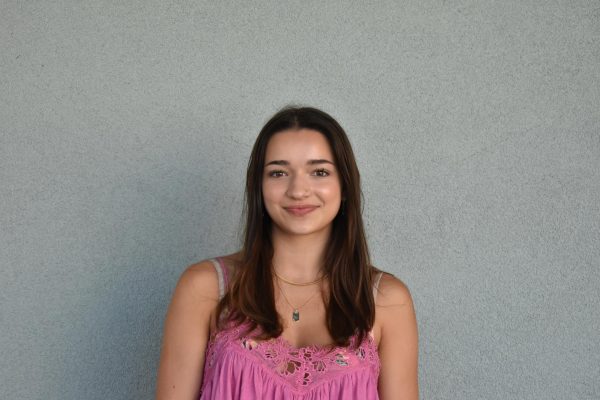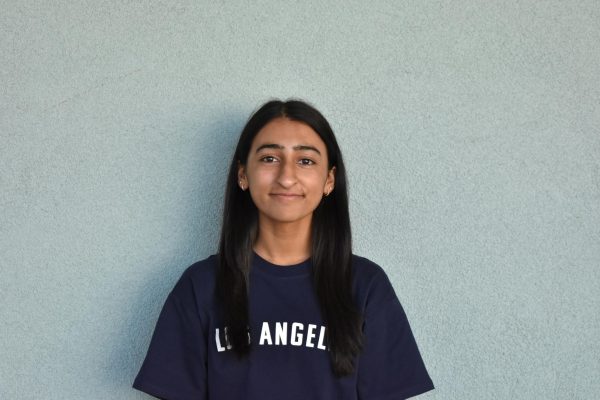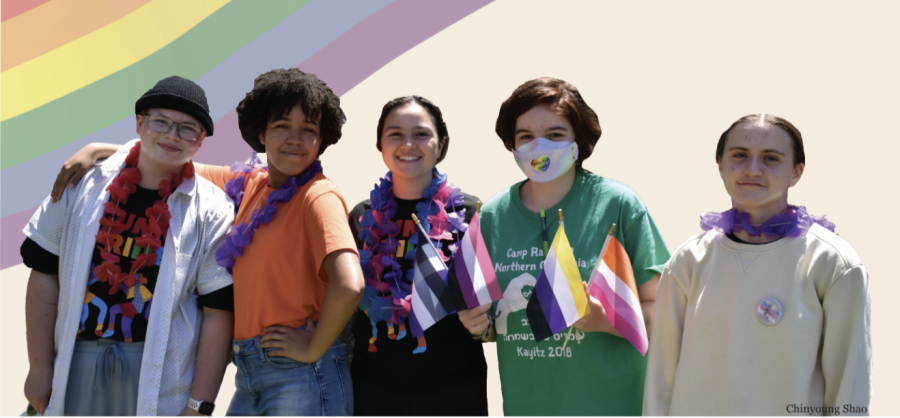From past to present: Celebrating pride month
Celebrated every June, Pride Month honors the LGBTQ+ community and their fight for equality and acceptance. During this month, members of the community and allies come together through events to commemorate queer history, uplift voices in the community and educate individuals. These events include parades, workshops and other ceremonies.
History of pride month
The origins of Pride Month can be traced back to the 1969 Stonewall riots in New York City, in which a police raid on the Stonewall Inn, a gay bar, catalyzed a series of protests and demonstrations by the LGBTQ+ community. One year later, the first
Pride marches were held in New York City, Los Angeles and Chicago to commemorate the anniversary of the Stonewall riots. These marches marked the beginning of what would become an annual tradition of celebrating LGBTQ+ identities and advocating for equality and social justice.
The movement soon moved beyond these cities, touching the Bay Area. In 1970, LGBTQ+ activists organized the first San Francisco Pride Parade to commemorate the Stonewall riots. Since then, Pride has become an annual tradition in the Bay Area, with the parade and festivities attracting thousands of visitors from all over the world. The celebration has become a platform for the LGBTQ+ community to advocate for their rights and raise awareness about issues affecting their community.
Local LGBTQ+ events
Communities in the Bay Area have organized many Pride events and celebrations in addition to the San Francisco Pride Parade, including LGBTQ+ film festivals, dance parties and picnics. These events have become an important part of the cultural fabric of the Bay Area, highlighting the diversity, vibrancy and resilience of the LGBTQ+ community and promoting inclusivity.
Last year, junior Toni Minion inaugurated Gunn’s first in-person Pride Month celebrations as part of a Student Executive Council impact project. Events over two days involved festivities as well as educational activities. This year’s events took place on May 15 and 16, and similarly included a mix of celebration and education.
Co-Diversity Commissioner sophomore Sophia Howell, who took the lead in organizing this year’s events, noted that involvement from all Gunn students — regardless of whether they are part of the LGBTQ+ community — is key to building an atmosphere of solidarity and inclusivity. “It’s important to showcase your support and really step up as an ally to any community that faces oppression,” she said. “Whether it be a community that you are a part of or a community that you’re not, it’s important for all members of the Gunn community to step up and show that they’re an ally during Pride and celebrate alongside Pride because using your privilege is an incredibly important, if not fundamental, way to change the attitude of others and (of the) communities you’re a part of.”
In pursuit of this goal, many of this year’s festivities included more opportunities for student participation. The first day featured performances with connections to the LGBTQ+ community, and the second day included a fair with activities and resources from clubs and outside organizations.
Inspired by student requests for apparel during previous SEC events, such as Día de los Muertos and Global Cultures Week, Howell also designed a Gunn Pride shirt that was sold during this year’s celebrations. “I’ve finally gotten to the point where I felt confident enough to actually create, design and sell a T-shirt, which I hope will bring people together as another way of visible allyship and visible pride,” she said.
The Gender and Sexuality Alliance worked alongside the diversity commissioners in planning both days of events, providing feedback and ideas on activities, organizing their own resource table and ensuring that the event ac- curately represented the history of Pride Month. GSA Secretary junior William Sahami appreciated the more informational aspects of the events. “I’m looking forward to having educational opportunities that allow students to come out of these events with a better understanding of what (Pride Month) is about and why it’s important,” he said. “These events are a great way to show that Pride Month is also about just bringing people’s attention to the fact that queer people exist — there is the capacity to be seen and be strong.”
Through planning this event, Howell has been able to showcase queer joy and spark a sense of community. “Even before I came out, I always looked out for the little things, and I would say Gunn Pride is a little thing that our school does to show support,” she said. “As someone who is queer, seeing representation and seeing people prideful of themselves (makes me) really at home. Our community inspires those to take that leap to really find their community at Gunn and feel at home too.”
Intersectionality
The LGBTQ+ community’s fight for equality and visibility has been strongly intertwined with that of other marginal communities. The Stonewall riots that inspired Pride Month were led by people of color, demonstrating the role of intersectionality — or the existence of overlapping social categorizations — in shaping Pride. Because of this, Howell notes that it’s especially important to acknowledge the different types of privilege within the LGBTQ+ community. “In many ways, I and many people in Palo Alto are privileged in that it happens to be a more accepting community,” she said. “Personally, even though I am Latina, I am (considered) white since people perceive me to be white. There is a lot of privilege that goes with that, so learning about ways I can help and the history of the Black and brown trans communities is also incredibly important to me.”
Pride Month, in Howell’s view, is a time to acknowledge the varying identities and experiences the LGBTQ+ community encompasses and to celebrate the community as a whole. “I’m hoping that more people will see the joy that’s part of being queer because I know there is a history of violence and tragedy associated with being queer, but there’s so much innovation, love, joy and community that’s present in (the LGBTQ+ community),” she said.
Your donation will support the student journalists of Henry M. Gunn High School. Your contribution will allow us to purchase equipment and cover our annual website hosting costs.

Senior Zoe Leontis is a social media editor for The Oracle and has been on staff since January 2023. She enjoys dancing, drinking coffee and listening...

Senior Safina Syed is a features editor and SEC liaison for The Oracle and has been on staff since January 2021. When she's not reporting, you can find...


